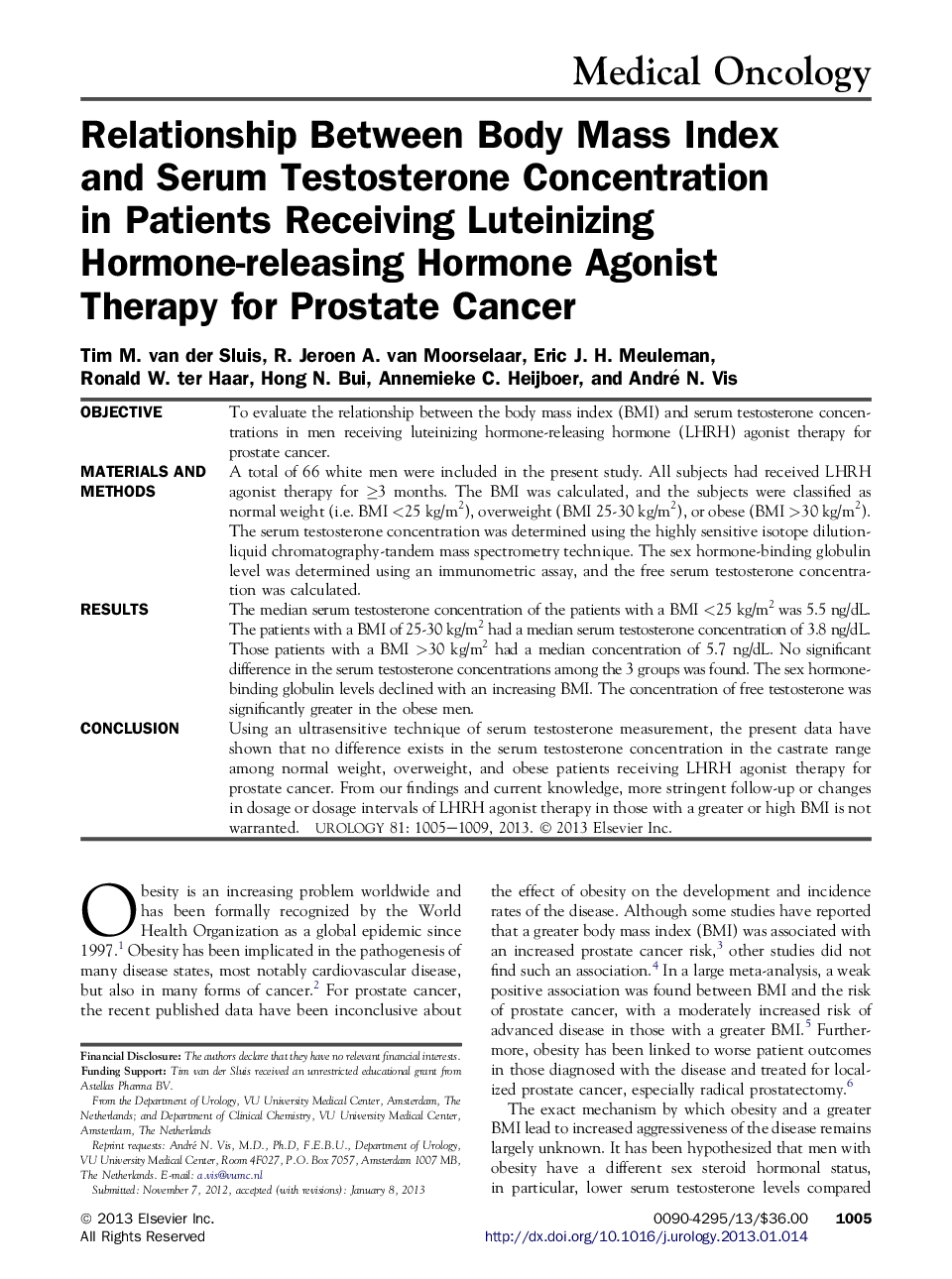| کد مقاله | کد نشریه | سال انتشار | مقاله انگلیسی | نسخه تمام متن |
|---|---|---|---|---|
| 6167397 | 1250319 | 2013 | 5 صفحه PDF | دانلود رایگان |
ObjectiveTo evaluate the relationship between the body mass index (BMI) and serum testosterone concentrations in men receiving luteinizing hormone-releasing hormone (LHRH) agonist therapy for prostate cancer.Materials and MethodsA total of 66 white men were included in the present study. All subjects had received LHRH agonist therapy for â¥3 months. The BMI was calculated, and the subjects were classified as normal weight (i.e. BMI <25 kg/m2), overweight (BMI 25-30 kg/m2), or obese (BMI >30 kg/m2). The serum testosterone concentration was determined using the highly sensitive isotope dilution-liquid chromatography-tandem mass spectrometry technique. The sex hormone-binding globulin level was determined using an immunometric assay, and the free serum testosterone concentration was calculated.ResultsThe median serum testosterone concentration of the patients with a BMI <25 kg/m2 was 5.5 ng/dL. The patients with a BMI of 25-30 kg/m2 had a median serum testosterone concentration of 3.8 ng/dL. Those patients with a BMI >30 kg/m2 had a median concentration of 5.7 ng/dL. No significant difference in the serum testosterone concentrations among the 3 groups was found. The sex hormone-binding globulin levels declined with an increasing BMI. The concentration of free testosterone was significantly greater in the obese men.ConclusionUsing an ultrasensitive technique of serum testosterone measurement, the present data have shown that no difference exists in the serum testosterone concentration in the castrate range among normal weight, overweight, and obese patients receiving LHRH agonist therapy for prostate cancer. From our findings and current knowledge, more stringent follow-up or changes in dosage or dosage intervals of LHRH agonist therapy in those with a greater or high BMI is not warranted.
Journal: Urology - Volume 81, Issue 5, May 2013, Pages 1005-1009
